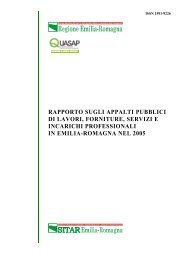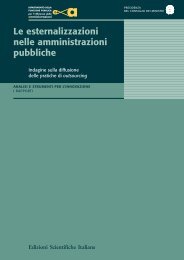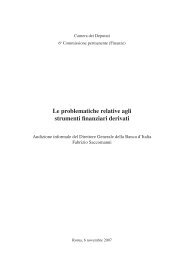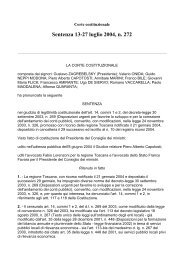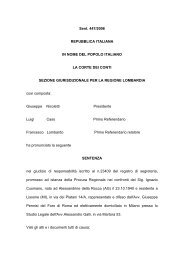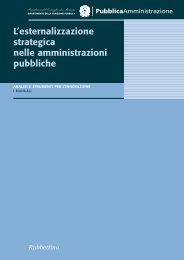Understanding the Public Services Industy
Understanding the Public Services Industy
Understanding the Public Services Industy
You also want an ePaper? Increase the reach of your titles
YUMPU automatically turns print PDFs into web optimized ePapers that Google loves.
<strong>Public</strong> <strong>Services</strong> Industry Review<br />
4. Inflexibility during <strong>the</strong> contract delivery phase<br />
4.32 Essentially a commissioning process has two main phases of interaction between<br />
<strong>the</strong> contractor and provider: pre- and post-contract. The pre-contract phase includes<br />
discussions around <strong>the</strong> details of <strong>the</strong> contract specification and <strong>the</strong> costs of delivery,<br />
leading to <strong>the</strong> selection of preferred bidder and contract signing. This phase is<br />
inherently and rightly competitive both among bidders and between <strong>the</strong> bidders and<br />
<strong>the</strong> commissioning authority. The second and much longer phase is post-contract<br />
delivery which involves ongoing project monitoring. During this phase <strong>the</strong> two parties<br />
need to work toge<strong>the</strong>r to respond appropriately to any unforeseen changes that impact<br />
on <strong>the</strong> delivery.<br />
4.33 Private and third sector stakeholders have commented that <strong>the</strong> working relationship is<br />
often better before contract signing than after. Once contract monitoring commences<br />
<strong>the</strong> attitude of <strong>the</strong> public sector commissioners is often inflexible towards dealing with<br />
changing conditions. This stifles innovation over <strong>the</strong> course of <strong>the</strong> contract and, in <strong>the</strong><br />
worst cases, may jeopardise its overall success.<br />
4.34 As discussed in Section 2 <strong>the</strong>re is significant empirical evidence that a collaborative or<br />
partnership model of working achieves good outcomes as both parties have incentives<br />
to be pragmatic in responding to changing conditions. This view was echoed both<br />
by stakeholders in <strong>the</strong> private and third sectors and those on <strong>the</strong> commissioning<br />
side, with <strong>the</strong> proviso that relationships need to be managed so as to ensure that<br />
competitive neutrality is not compromised.<br />
4.35 The term partnering is used widely within government and <strong>the</strong> private sector,<br />
but has no commonly agreed definition. It is an umbrella term to cover a variety<br />
of collaborative arrangements, behaviours and working practices. When used in<br />
this context it does not refer to formal commercial partnerships as defined by <strong>the</strong><br />
Partnership Act 1890. Partnering arrangements can vary widely in scope, from<br />
loose working arrangements operating under agreed principles, to a formal PFI<br />
contract. The term PPP (<strong>Public</strong> Private Partnership) covers <strong>the</strong> broad range of more<br />
formal contractual partnering arrangements. A summary of <strong>the</strong> range of partnering<br />
approaches is provided in Figure 4.3, ranging from <strong>the</strong> most to least flexible<br />
arrangements.<br />
48



